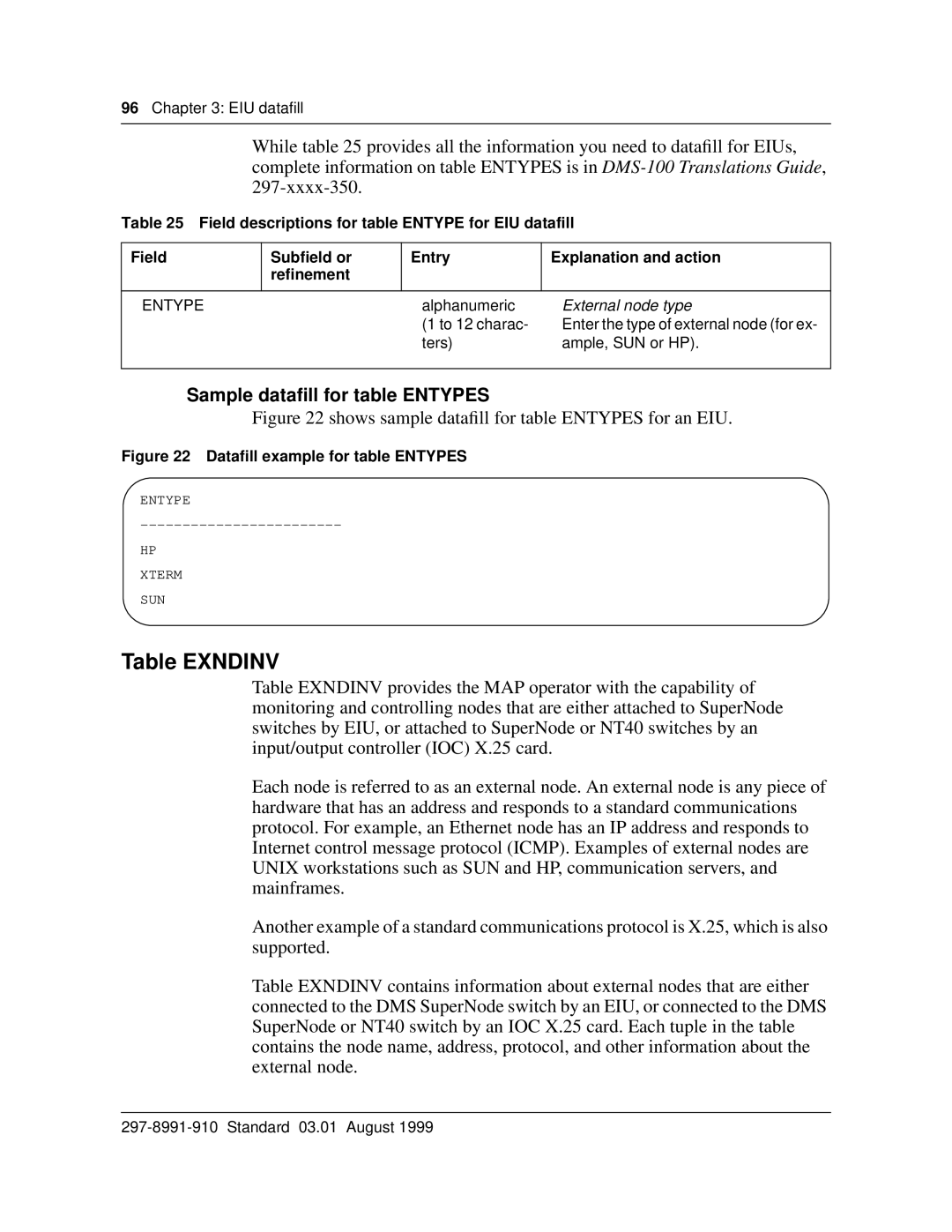
96Chapter 3: EIU datafill
While table 25 provides all the information you need to datafill for EIUs, complete information on table ENTYPES is in
Table 25 Field descriptions for table ENTYPE for EIU datafill
Field | Subfield or | Entry | Explanation and action |
| refinement |
|
|
|
|
|
|
ENTYPE |
| alphanumeric | External node type |
|
| (1 to 12 charac- | Enter the type of external node (for ex- |
|
| ters) | ample, SUN or HP). |
|
|
|
|
Sample datafill for table ENTYPES
Figure 22 shows sample datafill for table ENTYPES for an EIU.
Figure 22 Datafill example for table ENTYPES
ENTYPE
HP
XTERM
SUN
Table EXNDINV
Table EXNDINV provides the MAP operator with the capability of monitoring and controlling nodes that are either attached to SuperNode switches by EIU, or attached to SuperNode or NT40 switches by an input/output controller (IOC) X.25 card.
Each node is referred to as an external node. An external node is any piece of hardware that has an address and responds to a standard communications protocol. For example, an Ethernet node has an IP address and responds to Internet control message protocol (ICMP). Examples of external nodes are UNIX workstations such as SUN and HP, communication servers, and mainframes.
Another example of a standard communications protocol is X.25, which is also supported.
Table EXNDINV contains information about external nodes that are either connected to the DMS SuperNode switch by an EIU, or connected to the DMS SuperNode or NT40 switch by an IOC X.25 card. Each tuple in the table contains the node name, address, protocol, and other information about the external node.
